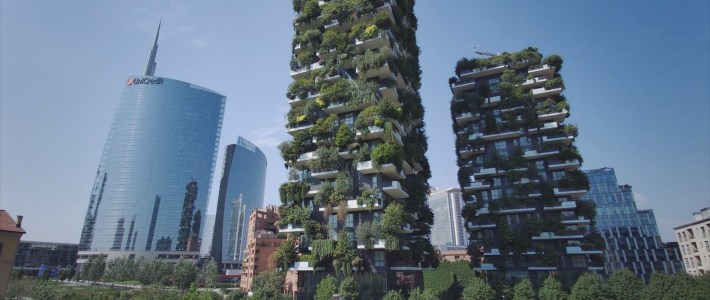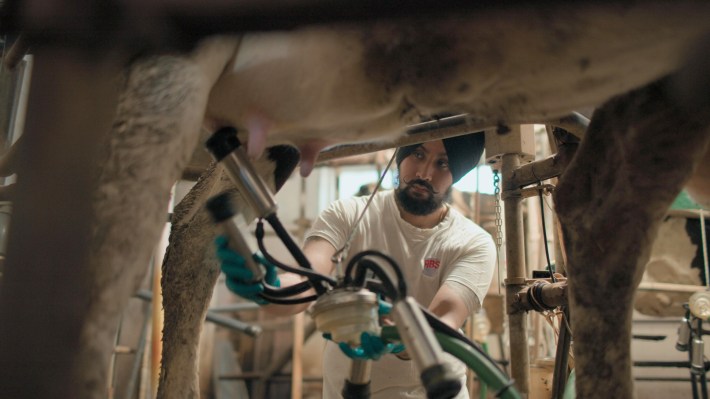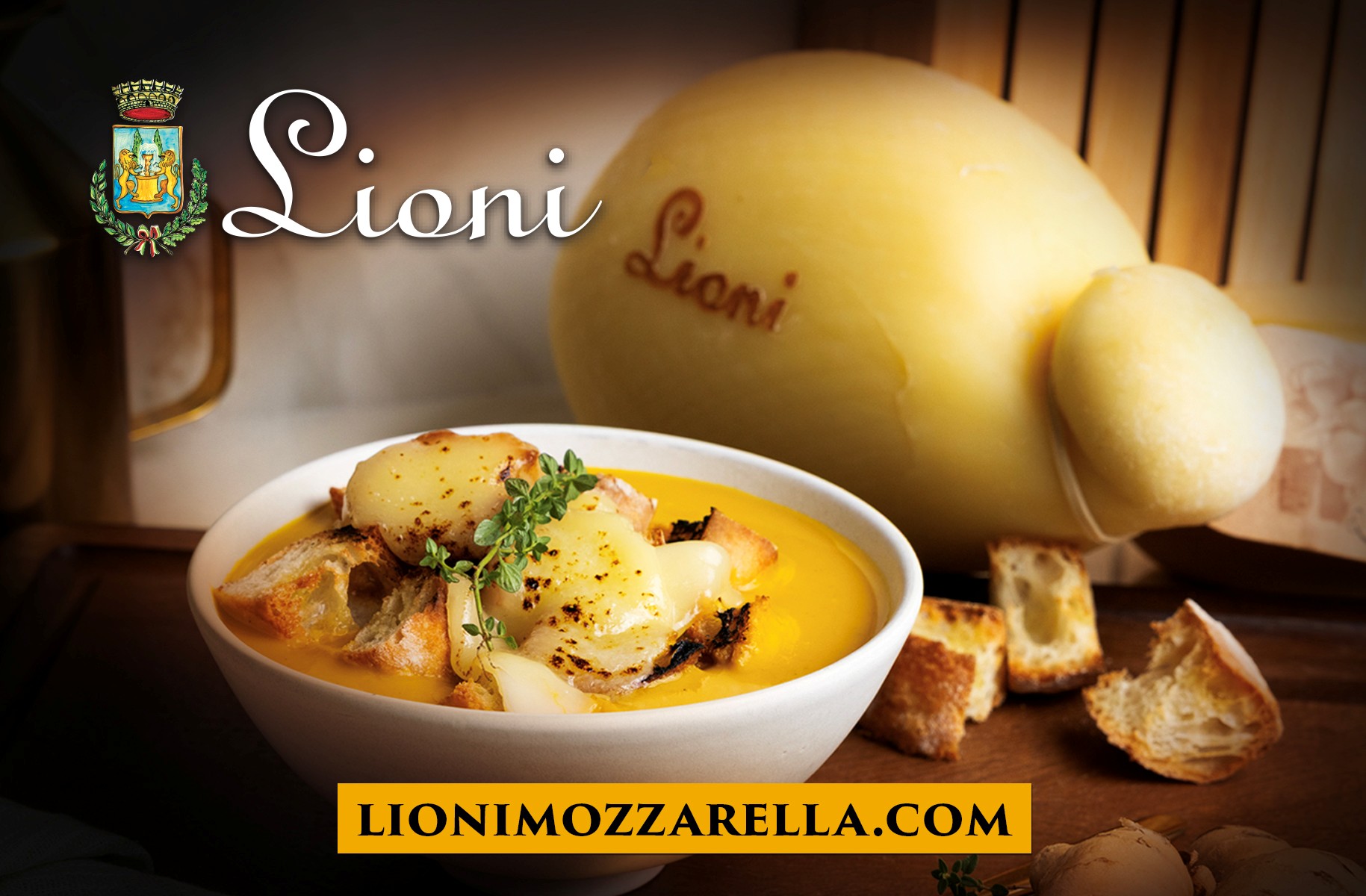In Episode Two of Tucci in Italy, Stanley Tucci heads north to Lombardy. It’s a region that represents finance, manufacturing, and Milanese fashion, but Tucci is looking at what’s coming out of the kitchens. He visits Milan, Bergamo, Brescia, and the striking plains of the Pianura Padana, meeting the people helping to maintain Italy’s obsession with food, flavor and community. Some are reviving fading traditions, while others are safeguarding centuries of history.
Milan’s Vertical Vision
Tucci begins high above Milan’s streets, standing on the balcony of the Bosco Verticale. These sleek, glassy towers are covered in trees and plants, offering a spectacular view of the city’s skyline. It’s here that Tucci starts talking about how innovation has shaped this part of Italy, not just in architecture, but in, of course, food.

Just outside the city, in Brusaporto, he visits Da Vittorio, a three-Michelin-starred restaurant that’s known for its balance of old-school service and “forward-thinking cuisine.” It’s run by brothers Chicco and Bobo Cerea, whose family has been at the heart of Italian fine dining since the 1960s. Tucci calls it “probably the best restaurant in the world,” but he’s not just there for the white tablecloth experience. He wants to see what goes on behind the scenes, and what makes this restaurant work so well.

That answer is Planet Farms, a vertical farm created specifically for high-end kitchens. Co-founder Luca Travaglini took Tucci inside the climate-controlled warehouse, where rows of greens grow under LED lights. There’s no soil, no pesticides, and no need to even rinse the leaves. Tucci bites into a leaf and winces slightly in surprise. “It punches you in the mouth,” he says.
At Da Vittorio, the chefs turn this harvest into a lineup of unexpected dishes. From a delicate salad sprayed with vinaigrette to a risotto topped with bright red prawns and salmon eggs, Tucci is mesmerized. A raw fish taco wrapped in vertical-farmed greens might be his favorite. He leans forward at the table, nodding with childlike delight. “Unbelievable,” he says. “It’s beyond food.” For him, the experience captures something bigger and is an example of how Lombardy’s spirit of experimentation makes its way onto the plate.
Fast Food, Italian Style
From fine dining to freeway dining, Tucci heads out onto the Autostrada, Italy’s national highway system. Along the way, he stops at Villoresi Ovest, one of the most iconic Autogrill locations in the country. Designed in the 1950s, it looks more like a spaceship than a gas station. But Tucci’s not here for nostalgia. He’s here to eat.

Inside the Autogrill test kitchen, he meets Daniele Campolongo, who walks him through their attempt to bring real food to a fast-paced setting. Tucci samples a fully vegan dish with soy protein mixed in coconut, cinnamon, sage, and lemon zest, excluding butter and all animal products. It’s part of the chain’s push toward sustainability, even though only a small percentage of Italians are currently vegan.
Tucci is polite, curious, and engaged. He tries it all. But his face softens when a plate of saffron risotto lands in front of him. It’s simple and familiar, and for a moment, he lights up. “It’s al dente, saffron, gorgeous,” he says. The Autogrill experience doesn’t carry the glamor of a Michelin star, but it’s proof that even fast food in Italy holds itself to a certain standard - fresh, local, and made with intention.
Caviar in Calvisano
In the province of Brescia, Tucci turns to something completely unexpected - caviar. Just outside the town of Calvisano, he visits Calvisius Caviar, a sprawling facility that farms sturgeon using a system tied to the steel industry. The farm repurposes excess heat from a nearby steel plant to maintain the warm water needed for sturgeon to thrive.
Tucci watches closely as the fish are handled with quiet care. Some are nearly two decades old, raised slowly before they’re ready to yield their eggs. Each fish produces up to ten percent of its body weight, and the rest of the animal is used for food. It’s a controlled, sustainable operation, and Tucci seems beyond impressed.
He heads to Al Gambero, Calvisano’s oldest fine-dining restaurant, to taste the results. There he meets a caviar expert who walks him through the ritual of tasting caviar - elegantly on the back of the hand. Tucci is at his best in this scene. He is impressed, not quite sure what to say. When the shrimp pasta topped with a healthy scoop of caviar is served, he can barely contain himself. “Decadent. Beautiful. A dream,” he says softly. He’s fully in the moment.
A Punjabi Revival of Grana Padano
In the flatlands of the Pianura Padana, Tucci turns to one of Italy’s most consumed and exported foods - Grana Padano cheese. It’s softer and less expensive than Parmigiano Reggiano, but made with just as much care. And according to Tucci, it might not exist today without a major shift in who’s producing it.

At a dairy farm outside Cremona, Tucci meets Gurpreet Singh, whose family emigrated from Punjab to Italy in the 1980s. Singh was six months old when he arrived, and now he runs a dairy where the cows are treated with an unusual level of calm. “They have feelings and a soul,” he tells Tucci. There’s even a “hall of fame” wall in the barn, honoring the top-producing cows.
Singh explains that Sikh farmers now make up about half of the dairy workforce in northern Italy. When locals left the farms in search of city jobs, these immigrants stepped in - not just filling a labor gap, but preserving an entire industry. Tucci watches the milking process and listens closely. This isn’t just about cheese. It’s about people who found a home, put down roots, and kept something alive. Tucci grows visibly emotional as he listens to Singh, revealing just how deeply he values discovering new places and people across Italy.
Trippa and Pure Gold
Back in Milan, Tucci finishes his journey at Trippa, a trattoria run by Chef Diego Rossi and Pietro Caroli. The restaurant has become a local favorite for its no-fuss approach to food and its embrace of offal, which are cuts of meat that once fed families out of necessity but are now rarely seen on menus.
In the kitchen, Chef Rossi prepares fried tripe with rosemary, rabbit offal, snails with pea cream, cheese fondue, wild garlic, and poppy flower leaves. The dishes are rustic, but there’s nothing sloppy about them. Tucci can’t stop smiling. “I can’t wait to tell my wife,” he says, beaming.
The last plate is as simple as it gets - tagliatelle with butter and Parmigiano Reggiano. Tucci eats slowly, taking it in. “Pure gold,” he says, and you can tell he means it. It’s just a simple dish made with care, and you can tell that he loves it as much as the caviar..
What Lombardy Really Tastes Like
Lombardy may not have the romantic image of Tuscany or the coastal charm of Sicily, but it offers a look at how Italy feeds itself today. There’s industry, invention, immigration, and a constant tug between old and new. In Milan, greens grow under LED lights. In Calvisano, caviar comes from steel-powered farms. And in Cremona, the future of cheese is in the hands of families who arrived from halfway across the world.
And Tucci doesn’t just eat. He listens, watches, laughs, and is constantly surprised by Italy’s innovation and ability to both change and stay constant. And by the end of the episode, you feel like you’ve learned something about the way people live, adapt, and keep tradition alive in places where no one expected to find it.
Stay tuned for next week's recap of Tucci in Italy: Trentino-Alto Adige.Follow Tucci’s adventures at @StanleyTucci, @NatGeoTV, and @AppetitoMagazine.







